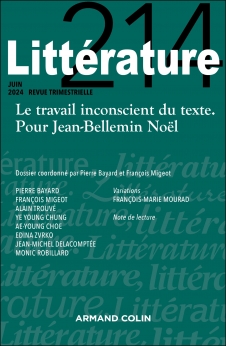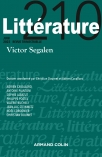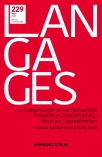
LITTÉRATURE Nº214 (2/2024)
Pour acheter ce numéro, contactez-nous
Recevez les numéros de l'année en cours et accédez à l'intégralité des articles en ligne.
Tout au long de son oeuvre, depuis L’Interprétation des (du) rêve(s) (1900) jusqu’à l’Abrégé de psychanalyse (1938), Freud, tout en donnant, pour l’interprétation, la priorité aux associations de l’analysant, ne renonce jamais complétement à utiliser la « symbolique ». Ce conflit est repris et instrumentalisé par Robbe-Grillet, lecteur averti de Freud, dans les modalités d’écriture de La Jalousie, et cela dans une perspective qui allie un avant-gardisme esthétique à une position résolument défensive par rapport à l’approche psychanalytique – et donc « textanalytique » – que ce texte développe et qui, du coup, sera mise à l’épreuve du roman. Cette lecture, se situant dans le sillage de la textanalyse de Jean Bellemin-Noël, voudrait aussi, à travers l’éclairage qu’elle espère apporter au roman, témoigner de la pertinence de ses avancées dans les rapports étroits qui unissent littérature et psychanalyse.
Over the course of his work from the Interpretation of Dreams (1900) to the Outline of Pshychoanalysis (1938), Freud prioritized the analysand’s associations in interpretation. While doing so, he nonetheless never completely relinquished the use of “symbolism”. This conflict was pursued and instrumentalised by Robbe-Grillet, a close reader of Freud, as testified in the way he chose to write La Jalousie (Jealousy). In this work, Robbe-Grillet combines aesthetic avant-gardism with a resolutely defensive stance in relation to the psychoanalytical – and therefore « textoanalytic » – approach, which the novel puts to the test. The reading developed in this paper, which follows in the footsteps of Jean-Bellemin-Noël’s textoanalysis, is intended to show how relevant his proposals are regarding the close links between literature and psychoanalysis.

